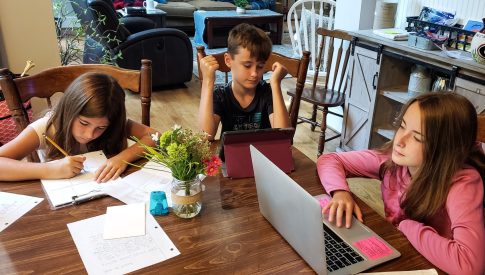Geography - National 5 index
Online Lessons for Students in Scotland learning National 5 Geography
- Weather
- Glaciation
- Coast
- Development & Population
- Urban
- Rural
- Climate Change
Learn about physical geography which focuses on the processes that shape the Earth’s physical environment and on the geographic patterns resulting from them. This is an important field of study for understanding present environmental stresses.
Learn about weather, which is affected by various factors including latitude and relief, the five main air masses and depressions and anticyclones which produce distinctive weather characteristics.
In this lesson learn about the four factors that affect the temperature which are latitude, altitude, ocean currents, and distance from large bodies of water.
In this lesson learn about the factors controlling the distribution of rainfall over the earth’s surface including the belts of converging-ascending air flow, air temperature, moisture-bearing winds, ocean currents, distance inland from the coast, and mountain ranges.
In this lesson learn about air mass which is determined by the region it has come from and the type of surface it has moved over. You will be taught about the five main air masses which affect the UK.
In this lesson learn about areas of low pressure which are called a depression. You will be taught that depressions bring unsettled weather and rain.
In this lesson learn about anticyclones which are the opposite of depressions. You will be taught that they are an area of high atmospheric pressure where the air is sinking.
In this lesson learn about a synoptic chart which any map that summarises atmospheric conditions (temperature, precipitation, wind speed and direction, atmospheric pressure and cloud coverage) over a wide area at a given time.
In this lesson become familiar with the SQA N5 Past Paper questions on weather.
Learn about corries, pyramidal peaks and U-shaped valleys which form due to glaciation. Glaciated uplands are used for different land uses which can lead to conflict. You will be taught about the strategies adopted to deal with these.
In this lesson learn about how glaciers shape the land through processes of weathering, erosion, transportation and deposition, creating distinct landforms.
In this lesson learn about corries, cwms or cirques which are the starting points for a glacier. You will be taught about glacial landforms that are created by processes of erosion and deposition.
In this lesson learn about rural areas where the physical landscape is affected by human activity. You will be taught about the conflict that this creates between land users in the area. There are a range of strategies used to try to overcome these conflicts.
In this lesson become familiar with the SQA N5 Past Paper questions on Glaciated Uplands.
In this lesson learn about the processes that form coastal landscapes – combinations of erosion, transportation and deposition processes.
In this lesson learn about erosional landforms including headlands, bays, caves, arches, stacks, stumps and wave-cut platforms.
In this lesson learn about the three land uses which are important on the Dorset coast: recreation and tourism, farming, and industry. The most important being tourism.
In this lesson become familiar with the SQA N5 Past Paper questions on Coastal Landscapes.
Learn about the human environment – the people who live in different environments, their activities and the environmental features which they have created.
Learn about the social and economic indicators of development influence population growth including birth rates and death rates while physical and human factors affect population distribution in a country.
In this lesson learn about physical factors which affect population density including water supply, climate, relief vegetation, soils and availability of natural resources and energy. You will also be taught about human factors that affect population density include social, political and economic factors.
In this lesson learn about the factors affecting populations including the main natural ones which are birth rates and death rates.


"It's bright and colourful, easy to read, and extremely easy to use unlike most textbooks or online learning websites" Daisy, S3 PupilSign Up & Learn Today

